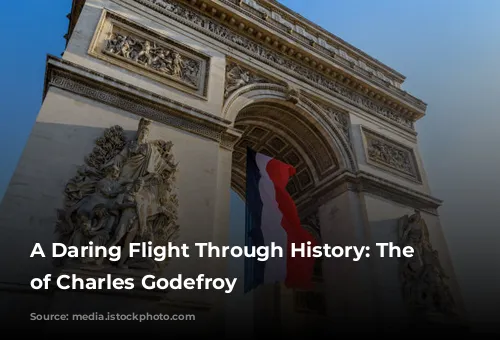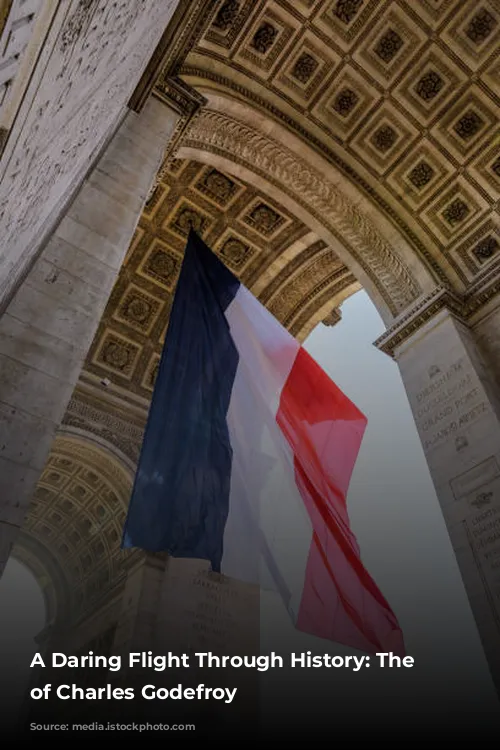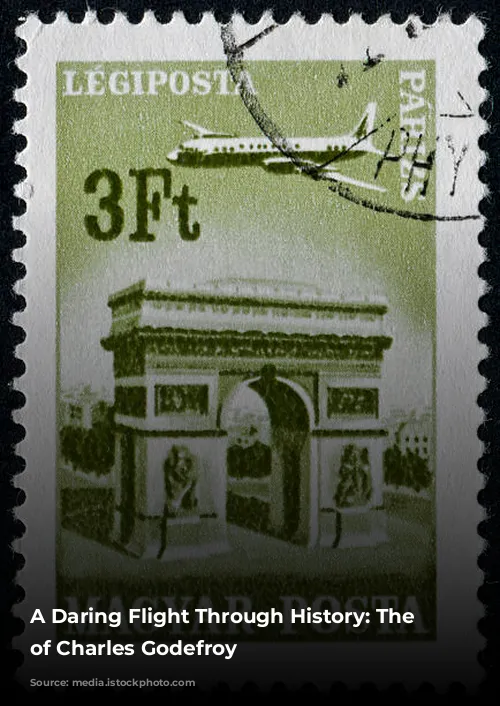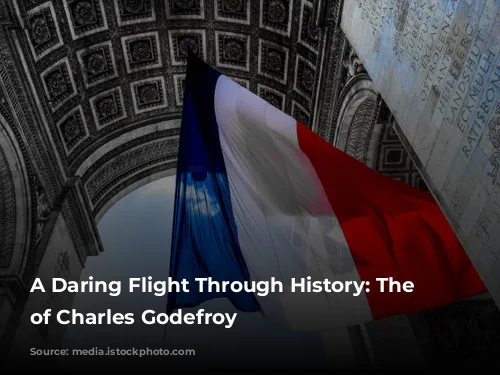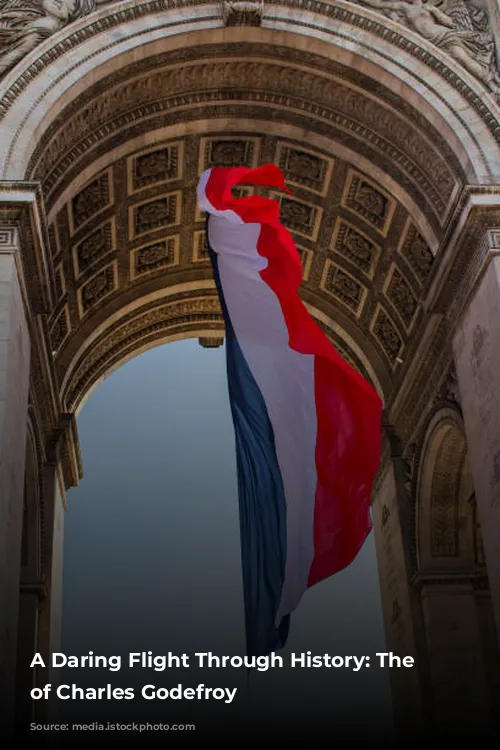Charles Godefroy, a French aviator, made history in 1919 with a daring and dangerous feat: flying his plane through the Arc de Triomphe in Paris. This audacious act, born from a sense of defiance against perceived disrespect towards pilots, cemented Godefroy’s place in aviation lore.
Godefroy’s path to this iconic flight began during World War I. Drafted into the military at the age of 26, he was wounded and later joined the French Air Force. His talent as a pilot quickly propelled him to become a flying instructor.
The war’s end brought victory parades and a planned celebration on the Champs Élysées. However, a directive that required airmen to march on foot alongside the infantry fueled resentment amongst the pilots, who considered themselves heroes of the skies. At a meeting at a bar on the Champs Élysées, a group of aviators decided to challenge this perceived slight by flying a plane through the Arc de Triomphe during the parade.
Jean Navarre, a decorated flying ace, was chosen for the mission. However, tragedy struck when Navarre died in a practice flight just days before the parade. With a spirit of courage and unwavering determination, Godefroy stepped in to fill Navarre’s shoes.
Godefroy, with his 500 hours of flight experience, meticulously planned the daring maneuver. He studied the air currents, the path through the Arc, and practiced his flight technique at a bridge in Miramas. With meticulous preparation and a blend of bravery and skill, Godefroy set his sights on making history.

A Moment of Defiance and Triumph
Three weeks after the victory parade, under the veil of secrecy, Godefroy took to the skies. In a Nieuport 27 sesquiplane, he soared over the Parisian landscape, reaching the Arc de Triomphe. He circled the iconic landmark twice, gathering speed before plummeting his plane through the narrow passageway.
The margin for error was minimal. The Arc’s width was just 14.50 meters, barely larger than the plane’s 8.21-meter wingspan. Witnesses described the tense scene: passengers in a passing tram ducked for cover, pedestrians scattered in fear, and the ground seemed to rush toward the plane.
Godefroy emerged from the Arc unscathed, a testament to his skill and daring. He flew over the Place de la Concorde, returning to the airfield, where he was greeted by the silence of oblivious onlookers.

A Legacy of Bravery and Controversy
The entire event was captured on film and photographs by journalist Jacques Mortane, Godefroy’s close friend. However, the authorities, fearing the act would be imitated, banned the film’s release. Though Godefroy tried to remain anonymous, his name quickly became public knowledge.
The authorities disapproved of his act but chose to issue only a warning. While articles about the daring flight appeared in many newspapers, Godefroy was forced to make a promise to his family to give up flying.
Despite his forced retirement from the skies, Godefroy continued to live a fulfilling life. He pursued his wine trade in Aubervilliers, passing away shortly before his 70th birthday. His legacy was honored by the municipality of Soisy-sous-Montmorency, which named a street and erected a memorial stone in his memory.
Godefroy’s daring flight through the Arc de Triomphe remains a testament to human courage and the audacious spirit of aviation pioneers. His name stands alongside those who pushed the boundaries of flight, forever linked to a moment of defiance and historical significance.


